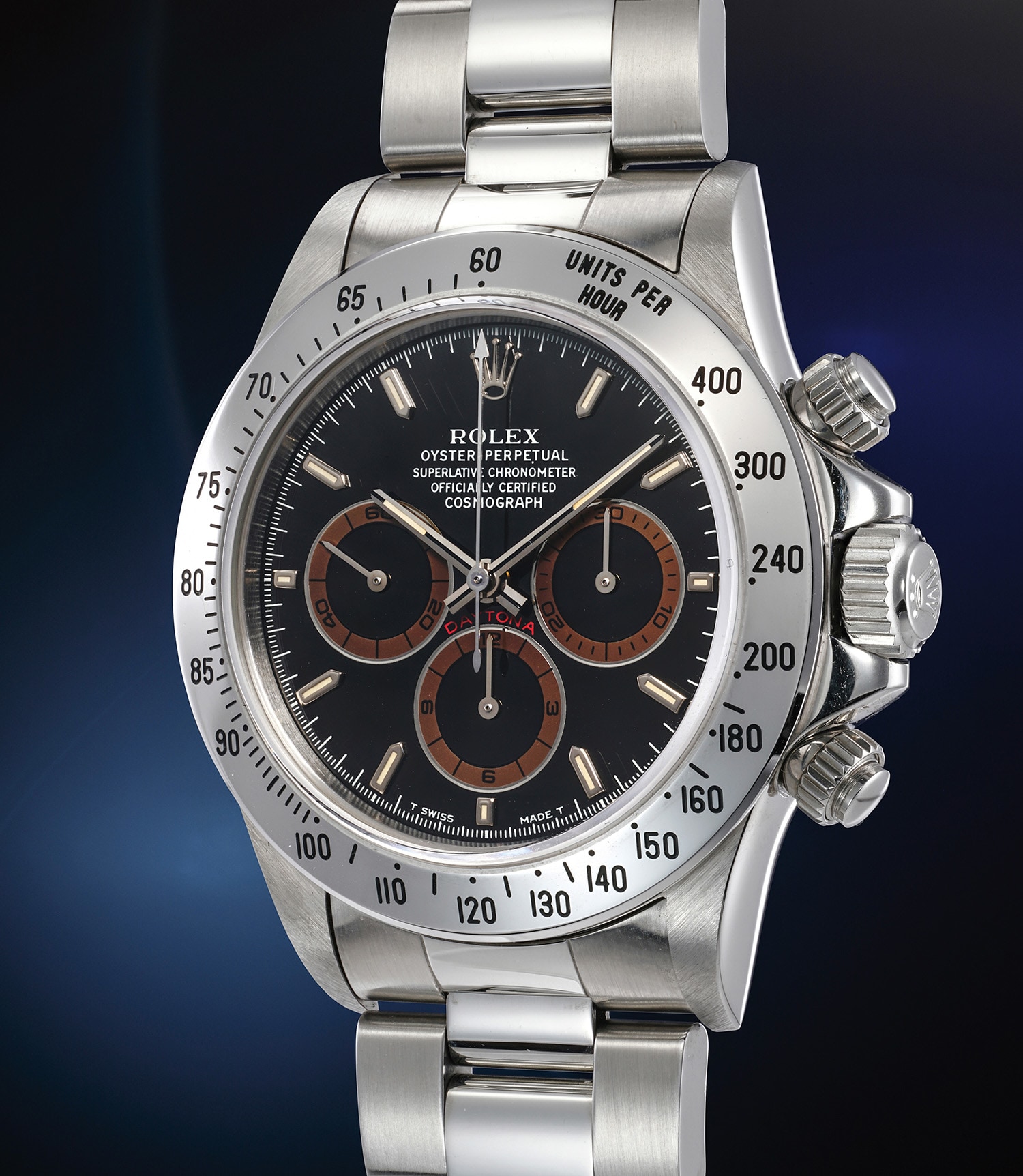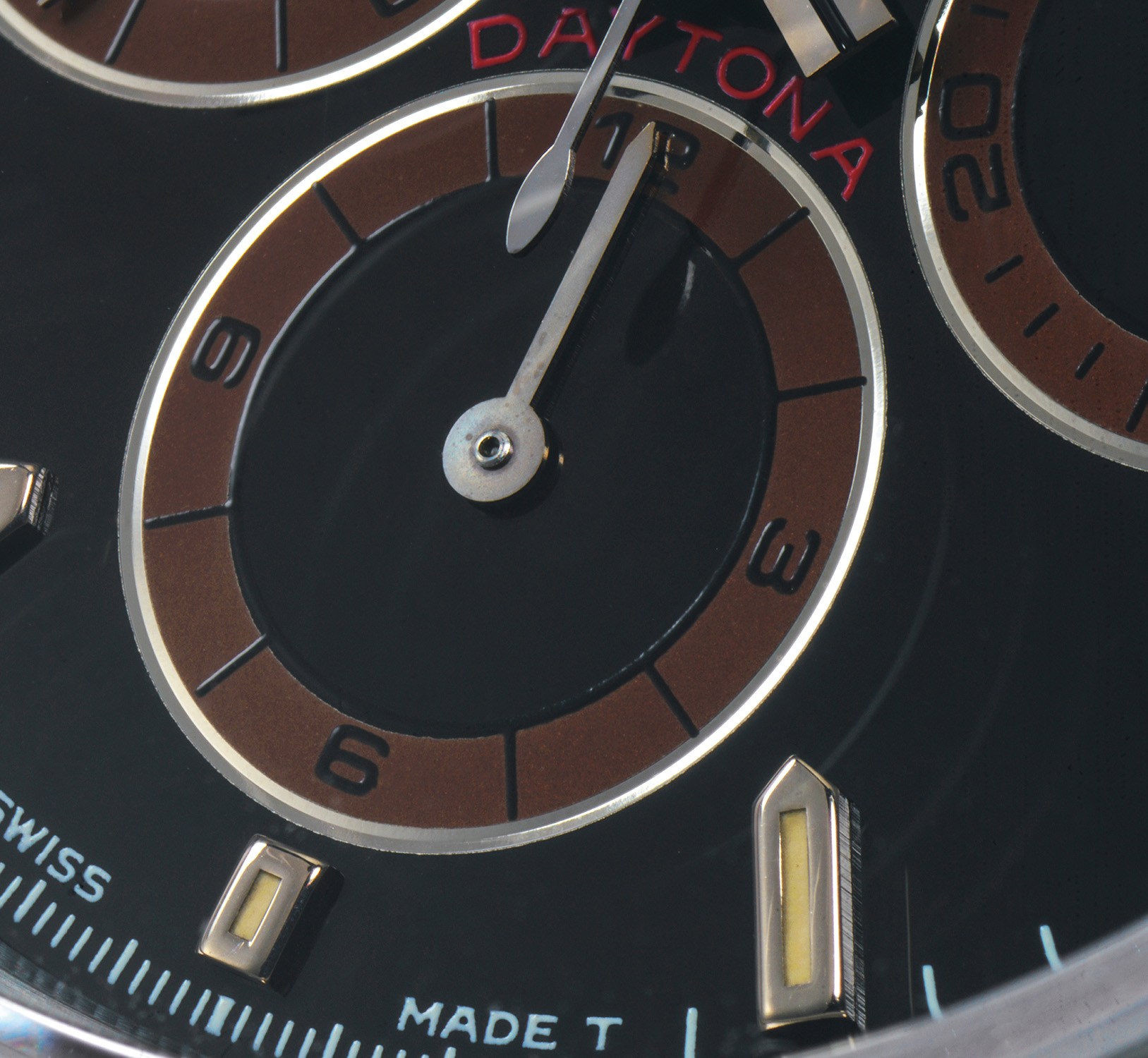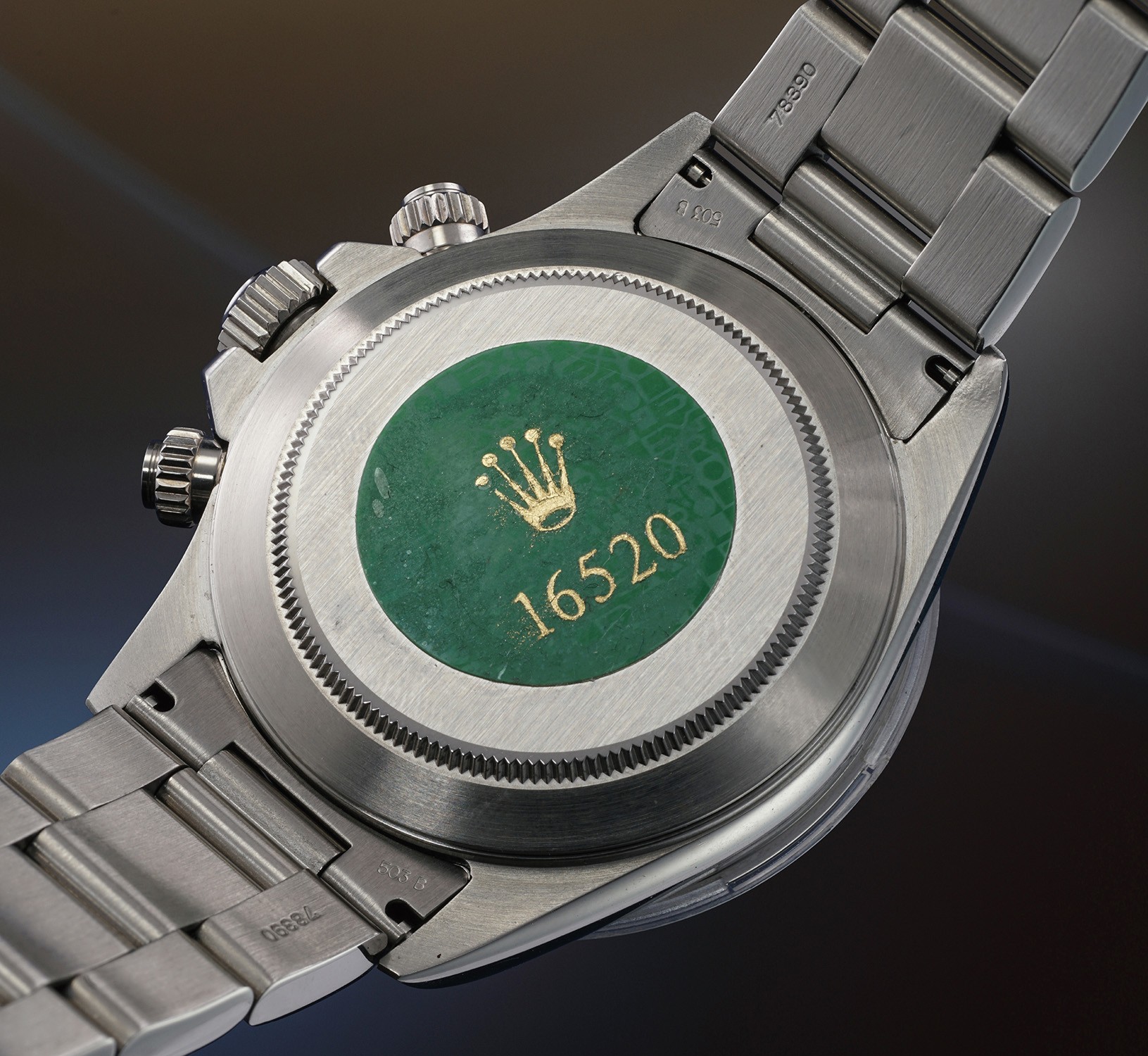





128
Rolex
Ref. 16520, inside caseback stamped "16500"
Cosmograph Daytona "Patrizzi" dial
An unpolished, extremely well-preserved and enormously attractive stainless steel chronograph wristwatch with dark brown "tropical" dial and bracelet
Full-Cataloguing
While in production for about 12-13 years - a relatively short timespan - the model features a variety of dial variation (especially in its early days), each with a very specific appeal to the collector.
The “Patrizzi” dial - exemplified by this piece - is without a doubt one of the most attractive and sought-after by collectors. In fact, it can be considered one of the most visually striking dial variations found on the model, merging the rarity and intellectual appeal of a rare dial with the unbridled aesthetic appeal granted by the darkened counters. In fact, these dials are the result of a proper defect: some batches of the varnish used at the time by Rolex present chemical instability which, due to reaction with outside agents (UV, moisture etc.) darkened over time. It appears that such a peculiarity can only be found on examples bearing a S,N,T and W (such as the present watch) serials, and only on some examples from these series not all of the production.
As the darkening of the rings stems from a natural oxidation process, the final result varies enormously from watch to watch both in texture and in color, ranging from a light shade of tan in some cases, to near pitch-black in other. Arguably, the present watch represents one of the most appealing examples of Patrizzi dial to grace an auction room. It features an absolutely perfectly even milk chocolate hue tropicalisation, so complementary to the black dial color that one might think they are looking at the original Rolex design.
The case condition matches, if not surpasses, that of the dial. Obviously unpolished, hardly ever worn, and still retaining plastic protection ring and green sticker, it could be used to scholarly study how a 16520 case was when it originally left the factory.
Combining condition, looks, intellectual intrigue and absurd rarity, the present watch is without a doubt one of the most appealing Patrizzi 16520 to ever appear on the market.
Rolex
Swiss | 1905Founded in 1905 England by Hans Wilsdorf and Alfred Davis as Wilsdorf & Davis, it soon became known as the Rolex Watch Company in 1915, moving its headquarters to Geneva in 1919. Like no other company, the success of the wristwatch can be attributed to many of Rolex's innovations that made them one of the most respected and well-known of all luxury brands. These innovations include their famous "Oyster" case — the world's first water resistant and dustproof watch case, invented in 1926 — and their "Perpetual" — the first reliable self-winding movement for wristwatches launched in 1933. They would form the foundation for Rolex's Datejust and Day-Date, respectively introduced in 1945 and 1956, but also importantly for their sports watches, such as the Explorer, Submariner and GMT-Master launched in the mid-1950s.
One of its most famous models is the Cosmograph Daytona. Launched in 1963, these chronographs are without any doubt amongst the most iconic and coveted of all collectible wristwatches. Other key collectible models include their most complicated vintage watches, including references 8171 and 6062 with triple calendar and moon phase, "Jean Claude Killy" triple date chronograph models and the Submariner, including early "big-crown" models and military-issued variants.